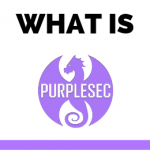5 Types of Nonprofit Graphic Design Your Organization Needs
Whether it’s a “We’re Open” sign or social media graphics, practically all for-profit businesses and nonprofits alike use at least one type of graphic design. But is your organization using it to its full potential?
Graphic design is the key to making your nonprofit’s valuable information approachable, engaging, and highly digestible. Your nonprofit’s data, when paired with graphic design, can engage donors and invite them to join your cause.
Your organization’s cause may be hard to understand emotionally or conceptually, and graphic design can help spruce up the material to appeal more to your target audience. Consistent nonprofit graphic design across all your platforms and content can help build your organization’s brand and attract and engage wider networks of support over time.
What are Types of Graphic Design for Nonprofits?
Different types of graphic design require various levels of expertise, but each type can be used to optimize aspects of your organization’s donor strategy. This can strengthen your brand identity and demonstrate the effort and dedication you commit to your cause to your staff and supporters.
Depending on your nonprofit’s needs, your branding, web, digital, publishing, and environmental designs can all be connected into a coherent whole to enhance your overall marketing strategy. Let’s take a deeper dive into each of these types of graphic design:
Table of Contents
- Nonprofit Branding Graphic Design
- Graphic Design for Nonprofit Websites
- Digital Nonprofit Graphic Design
- Print Nonprofit Graphic Design
- Environmental Nonprofit Graphic Design
1) Branding Nonprofit Graphic Design
Branding should be at the heart of all your design and marketing materials. Having a strong brand identity means your nonprofit will become more easily recognizable.
A study by the Stanford Social Innovation Review created a framework, called Nonprofit Brand IDEA, to keep nonprofit brands relevant and recognizable while staying true to their mission and core values. The framework’s acronym stands for integrity, brand democracy, brand ethics, and affinity. According to the study, “a nonprofit brand is most powerful when the organization’s internal identity and external image are aligned with each other and with its values and mission.”
Create a style guide to inform all of your organization’s design choices for the next few years, as consistency helps maintain your brand identity. The style guide should have a strong color palette that evokes the correct emotions for your cause.
According to Digital Synopsis, 95% of buyers focus on visual appearance when buying a product. Look for colors that incite feelings that align with your brand and cause:
- Bright warm colors like orange and yellow are associated with welcoming, excitement, happiness, and optimism.
- Green and brown are often used for wildlife and nature nonprofits. The muted colors evoke a sense of peace, tranquility, and preservation.
- Cool colors like blue and purple are associated with royalty, wisdom, truth, and loyalty. The Boys and Girls Club has an iconic logo with two shaking hands outlined in blue, which gives the feeling of trust and comradery, which are the core values of the organization.
You can even use color palette tools like Coolors to test how colors match up or contrast each other to find what will work best for your organization.
Once you have a style guide locked in, apply it to your logo and all branding materials you make going forward. It can be helpful to place your logo and brand colors on your merchandise such as t-shirts,
Logo
Logos should represent your brand visually, ideologically, and support your core values. Try to represent different aspects of your brand in your logo like in this example:
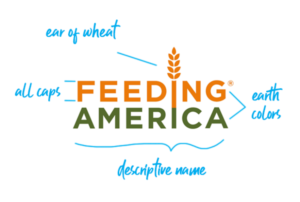
The Feeding America logo is a great example of how to use graphics to optimize your brand identity. The individual design elements of the logo are all connected to an aspect of the organization’s mission:
- The wheat symbol represents Feeding America’s original name, Second Harvest.
- The earth tones represent the colors of vegetables and grain-based food, which are common foods provided by the organization.
- The connecting letter I in Feeding and America represents the network of food banks around the country.
Be sure your logo represents your brand, and use simple imagery that is easily recognizable. The logo should be simple enough to be used on almost all types of graphics. A simple test to see if your logo is simple enough is to envision it as a favicon, or the icon on a browser tab. If it cannot be used there, it needs to be simplified.
To make this possible, have your designer create several variations of the logo for different formats such as text-free, vertical, horizontal, and full versions. Be sure to include in your brand guide when and where each variation of the logo should be used.
Merchandise
The Best Friends online shop is full of branded merchandise that includes usable items like treat bags, totes, water bottles, pins, hats, pet towels, and more. Their merchandise perfectly aligns with their cause of helping animals, are practical, and branded. Donors and supporters can sport their Best Friends swag because they think it’s cool or because they support the cause, but either way they will be helping the organization.
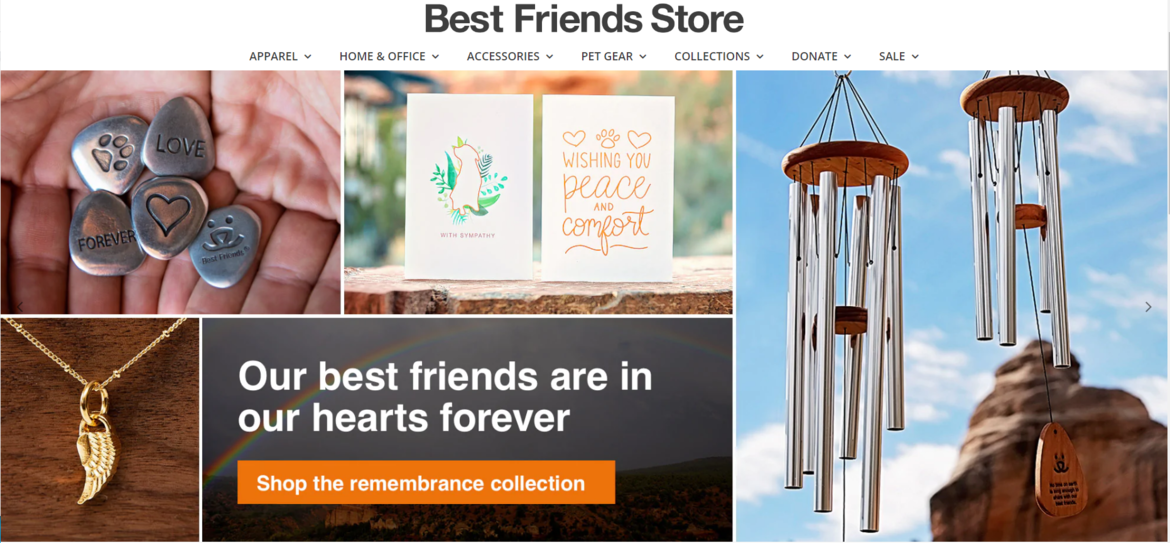 Merchandise can be used throughout the organization’s operations from staff uniforms, to event giveaways, prizes, concessions, and selling to donors on an eStore.
Merchandise can be used throughout the organization’s operations from staff uniforms, to event giveaways, prizes, concessions, and selling to donors on an eStore.
Choose merchandise items that align with your mission like the dog treat bags from Best Friend’s, an animal rescue nonprofit.
Here are some examples of how merchandise can match with common nonprofit missions:
- Health and wellness. Water bottles, yoga mats, and journals.
- Children’s Health. Yo-yos, frisbees, and nightlights.
- Education. Books, colored pencils, and mousepads.
- Arts. Paint palettes, aprons, and printed illustrations.
Ideally, merchandise items should be practical and used regularly in people’s everyday lives. Hopefully after viewing your brand frequently, they will feel increasingly attached to your image and mission thus be more prone to giving.
Style guide
Style guides are important when you have several team members working on different aspects of marketing and communication materials. Style guides help deliver continuity throughout web, print, and promotional materials.
For example, Unicef’s 2016 graphic’s manual lays out which colors to use for the logo depending on platform:
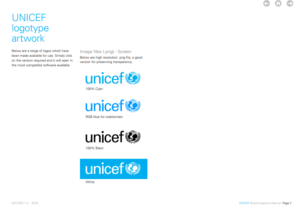 Unicef is a great example of using strong color themes, with compatible fonts throughout their platforms. Be sure to select fonts that complement each other, and try to avoid using more than three fonts on a webpage. Too much change in typography can be distracting to readers.
Unicef is a great example of using strong color themes, with compatible fonts throughout their platforms. Be sure to select fonts that complement each other, and try to avoid using more than three fonts on a webpage. Too much change in typography can be distracting to readers.
Graphic designers are trained to tailor typography and branding styles to company themes, so be sure to discuss how to stylize your brand for your target audience.
Different fonts and art styles appeal to different audiences. Here are some adjectives to use when describing your audience and the connotation you may want them to get from your organization’s style.
- Children. Use more playful, open, and hopeful typography.
- Young adults or millennials. Use more bold, energetic and punchy typography.
- Older adults. Use traditional, bold, and emphasized typography.
Tools and skills needed for designing your brand identity:
- Graphic design
- Color theory
- Branding and strategy
2) Graphic Design for Nonprofit Websites
Graphic design for websites should be optimized for user experience to captivate and lead viewers naturally through the web pages.
Interesting hero and feature images can pull a reader into the page. A hero image is a prominent image or video spanning the entire width of your homepage. This should demonstrate core values, show volunteers working for your cause, or have imagery related to your cause.
Your nonprofit’s website design should enhance your mission and make your goals known. The design can be simple. Don’t be afraid to stylize your website, but be sure you aren’t overdoing web features that may make navigation less intuitive.
Be sure to implement your organization’s style guide for your website design to create visual consistency between your website and all other branding material. Visual consistency helps your audience feel more confident about the content and less focused on the formatting.
Website images
Including images on your website can help people understand what your nonprofit does and who your cause impacts. The Malala Fund uses a hero video with several clips of the girls impacted and volunteers:
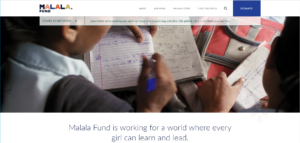 Still images or videos that demonstrate your direct work with your cause are perfect for informing and grabbing the attention of site visitors.
Still images or videos that demonstrate your direct work with your cause are perfect for informing and grabbing the attention of site visitors.
Visuals should reference your core values, logo, your cause, and educational resources. Try to incorporate imagery of past work your volunteers have done, or what initiatives they are currently working on.
Color Scheme
Stay on brand by using the style guide, logo, and brand colors throughout the website. The main colors from your guide should be used to emphasize titles or calls to action. Color can make a page come alive, but be sure you don’t flood the page with too many colors.
Invite the reader in with emphasized headings, leading images, and easy to read text. Be sure there is always high contrast between text and background colors.
Donation Page
Donation pages are great to link to in promotional materials, social media posts and bios, and on your informational web pages on your website. Children’s Healthcare of Atlanta has a donation page that grabs viewers’ attention and easily leads them through the donation process with high-quality graphic and website design.
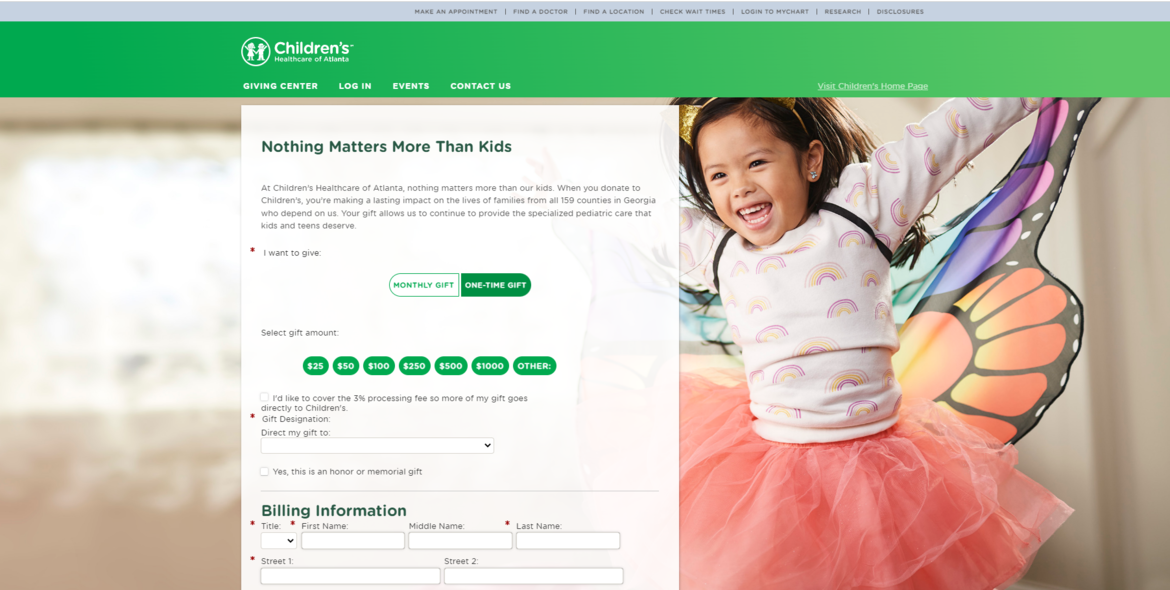 The CHOA donation page uses its green brand color and logo so viewers can quickly know what donation page they’re on. The title text and background hero image creates an emotional pull, encouraging supporters to remember why donating to the cause is so important.
The CHOA donation page uses its green brand color and logo so viewers can quickly know what donation page they’re on. The title text and background hero image creates an emotional pull, encouraging supporters to remember why donating to the cause is so important.
With simple imagery, branding, and mission-centric text, the CHOA donation page easily leads viewers through the donation process.
Be sure to include your nonprofit’s cohesive branding and digital style on your donation page. These are the perfect pages for sending potential donors to. Usually they will be linked from a landing page, informational page, or social media posts and ads. They should be informational, inspiring, and easy to navigate.
UX/UI Design
Graphic designers will work closely with UX (user experience) and UI (user interface) designers to ensure the visuals of a website are seamlessly matched to the flow and layout of webpages. User experience and user interface design focus on how website visitors navigate the website and interact with different features.
On HeForShe’s website, users can easily navigate to campaign, resource, and testimony web pages from the home page.
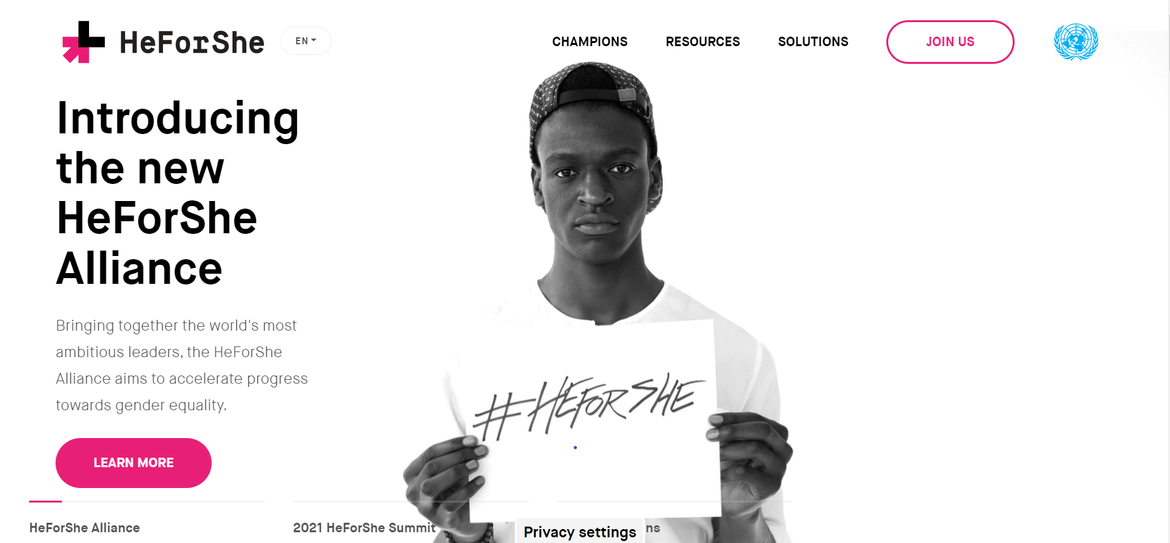 A labeled “Join Us” button is highlighted with brand colors in the menu bar, and when clicked, a drop-down menu appears that includes all the links to HeForShe’s social media accounts. Users can also choose from a list of ten languages to translate the website into, which expands the support potential for the organization.
A labeled “Join Us” button is highlighted with brand colors in the menu bar, and when clicked, a drop-down menu appears that includes all the links to HeForShe’s social media accounts. Users can also choose from a list of ten languages to translate the website into, which expands the support potential for the organization.
Here are some basic guidelines for optimizing user experience:
- Choose inviting colors from your style guide to pull readers in.
- Dark text should be over a light background. Always aim for high contrast with text.
- Avoid small text over images.
- Use hierarchical headings to lead visitors around the pages and through the site.
- Work with a web developer who is experienced in UX, UI, and web accessibility.
- All websites should be mobile-optimized, so you don’t miss out on donors who happen to access your pages via their smartphones.
The key to a great website is a great team! Be sure to build a team of designers who can integrate graphic design and user experience for the best version of your nonprofit’s website.
Tools and skills needed for nonprofit website design:
- Adobe Suite
- Adobe Illustrator
- Wireframing
- UX/UI knowledge
3) Digital Nonprofit Graphic Design
You need an active robust presence to stand out online these days.
Visually appealing content is important on social media platforms because it is what gets people to engage and share. Include branding on all digital materials such as infographics, social media posts, videos, and email newsletter elements. This ensures the brand name is being spread and related to your content in case these are shared from your profile.
Infographics
Infographics are great for breaking complex information down into bite sized pieces of information and visuals that people will be more willing to interact with and share.
This example from the 4-H Organization, breaks down their main goal, activities, and impact all into one graphic.
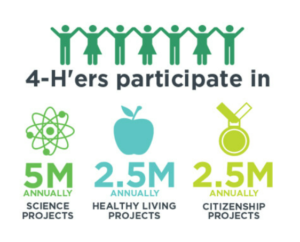 This 4-H infographic uses stand-out numbers that are important and highlights them by isolating them from text. This infographic is on their informational webpage, but could easily be transferred to their social media.
This 4-H infographic uses stand-out numbers that are important and highlights them by isolating them from text. This infographic is on their informational webpage, but could easily be transferred to their social media.
Be sure to make infographics with software that allows you to easily scale the project for different platforms. Choose some of your most pertinent information to highlight so readers receive information about your organization they need to understand your impact and the role they play in driving it.
Infographics can humanize content or help supporters visualize your organization’s goals. For example, you could also explain goals such as building a new homeless shelter by pulling statistics about how long the process will take or how much funding per day would be necessary to cover the length of the project.
Add logos to ensure that if the information is shared, that your organization’s brand visibility grows as well.
Online Greeting Cards
We’ve all heard of digital greeting cards (AKA eCards), but did you know that you can use them to bolster your nonprofit’s brand identity?
With visually-engaging designs, you can accomplish all sorts of objectives with eCards. This charity eCards guide by eCardWidget explores several use cases, such as:
- Boost event and volunteer sign-ups by designing invitations. Extend a personal invitation to your most committed supporters with invitation eCards. You can even have supporters send invitations to their loved ones, which lets them handle the marketing for your fundraising events and volunteer opportunities.
- Raise money by selling charity eCards. Give donors a reward for donating by selling eCards for special occasions like birthdays they can send to their loved ones. You can even create tribute eCards in which someone donates and then can send a card letting the honoree know.
- Foster stakeholder relationships. Reach out on special occasions — like birthdays, anniversaries, and holidays — to let supporters, board members, and sponsors know you’re thinking about them.
To explore these different eCards uses, you need to spend time crafting beautiful designs. Be sure each design reflects the visual identity and branding of your nonprofit organization. Use your brand fonts and logo when possible. Then, choose images that resonate with your nonprofit’s mission, cause, or the specific campaign you’re promoting. Compelling visuals can evoke emotions and capture the essence of your organization’s work.
Take this eCard from Peace Winds for example:
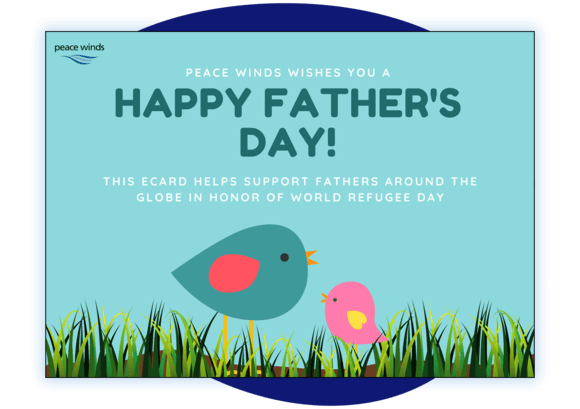
The organization sold Father’s Day cards as a way to spread awareness of World Refugee Day, which happened to fall around the same day. Donors could buy the cards and support a great cause while also receiving meaningful cards like this to send to their father figures.
To simplify the nonprofit graphic design process, use a trusted provider to create your charity eCards. They’ll often have templates you can and customize with your organization’s branding.
Social Media
Social media needs to be relevant and updated on a regular basis to establish credibility. Follow your style guide for your posts’ graphics and to create visual consistency for your organization’s profiles.
You can run campaigns with color scheme variations, but keep the branding consistent with logos and your organization’s name watermarked.
Infographics are popular to share on social media feeds and stories. Individuals often share infographics and statistics about causes and current events they are passionate about. Posting infographics can help you gain an audience with those who support your cause but may not know of your organization yet.
Post information about how supporters can get involved with your cause such as volunteer dates, text-to-give campaigns, peer-to-peer fundraising, and sharing awareness campaigns. Supporters can help spread awareness for you through social media even if they are unable to donate.
Inserting Logos
Put your logo on all of your digital products to ensure your content is always being shared with your name attached. More recognition means more support, a larger network, and more awareness!
Quiz Campaign
Designers can create interactive graphics that live on your site and can be linked to from other platforms. A quiz campaign is great for spreading awareness and getting supporters thinking about your cause.
One, a global nonprofit that aims to eliminate world poverty, created a quiz campaign about African geography to raise awareness of the nine worst countries for women’s education.
Interactive games and quizzes can take extra time, but using your organization’s primary or campaign-specific branding can take your fundraising to the next level.
Videos
Videos can be helpful to post on social media or to embed into your website. It can be helpful for potential donors to hear directly from your nonprofit’s leadership, staff, or individuals impacted by your cause.
An “About” page with a video explanation is a great way to humanize your nonprofit’s efforts and explain the impact you are trying to make. Sometimes design agencies have one person who does all the video content, and it can be good to have one person do all the video so it’s up to professional quality. Make sure they have experience working with video, audio, and graphics editing.
Ideally you would need to keep the same branding techniques such using the logo and style guide to inform your style decisions.
Email Newsletter
Email newsletters are the perfect way to share important or engaging updates in bulk. This way supporters don’t feel overwhelmed by too many separate emails.
Viewers can choose their own level of interaction by clicking the elements they want to learn more about.
Be sure to include your logo, infographics, and embedded social media posts. These elements all work together to form branded content that can be shared via email or printed as a report.
Skills and Tools Needed for Designing Digital Nonprofit Assets:
- Adobe Illustrator
- Photoshop
- Social Media
- Adobe Premiere
- Lightroom
4) Print Nonprofit Graphic Design
Publishing and print design helps spread the word about your organization via hard copy materials that you may send to donors or give out at events.
This type of design is a continuation of digital designs, as many of those designs can be slightly adjusted to fit a print medium. A designer can help you create items that people will use and see daily or frequently, and will in turn be reminded of your nonprofit.
Print designs will require extra attention to layout and formatting. If you are or are not using a design service, here are some best practices to look out for when creating this type of content:
- Text and backgrounds should have high contrast.
- Avoid crowding words or lines too closely.
- Avoid blocks of whitespace between text boxes.
- Don’t overload a page with visuals or text.
- Use consistent fonts for headers and body text.
- Using brand colors is important for visual consistency and brand recognition.
Thank-You Postcards
Creating evergreen thank you cards to send to donors quarterly or annually, depending on their giving pledge, can help strengthen your connection to supporters.
Your donor base will feel appreciated, and the information included will help them understand their donations’ greater impact. Have an evergreen postcard template that you can slightly alter with informational and branding updates.
This will streamline your donor recognition process and keep supporters up-to-date with the latest initiatives and fundraisers.
Thank you cards should always be styled according to the current style guide and brand logo. Be sure to include any details about upcoming events, fundraisers, or new ways they can donate monetarily or with volunteer hours.
Stickers
With the ongoing trend of adding stickers to water bottles and laptop cases, making branded stickers is sure to get interest from supporters!
Gift branded stickers to staff, supporters, or people you speak to at events. They’ll be sure to stick them onto their water bottles, phone, keychains, or even their laptops.
People usually like to place their stickers somewhere visible to show their involvement with the cause, meaning that you get free ads wherever your stickers go! If your organization has a slogan, brand saying, or any quirky catchphrases, these types of stickers are popular.
Similar to the “I Voted” stickers, people love to show that they contributed to a cause they are passionate about. Consider printing stickers with “I pledged” or “I donated” and then your organization’s name.
Stickers can indirectly reach out to your supporter’s network, start conversations based on the stickers you’ve sent out, and broaden your donor network.
Business cards
The oldest trick in the book to growing an organization is talking about it! Be sure that your leadership, board members, and staff have some business cards to give out at conferences, events, and if they ever encounter an inquisitive person on the street.
Be sure to include the team member or volunteer line’s phone number. The cards should also include a website link or QR for the supporter to easily view your donation, volunteer, or informational page. This is a great way to give prospective supporters or partners more information without overloading them with statistics and mission statements.
Annual Reports and Fliers
Similar to postcards, it’s not a bad idea to have an evergreen template version of your annual reports to streamline the sharing process.
Annual reports are more likely to be read when they include visuals like graphs, small infographics, images, and pull quotes or statistics. Dense information about your organization’s yearly fundraising efforts, the outcome, and financial details can be broken down into more understandable pieces by dividing sections with visuals. Sections of the report can be rearranged to create informational fliers to hand out at events and to send in the mail.
DonorSearch created this example of a design-forward report page using graphs and short descriptions of significant statistics from the year to break up the text.
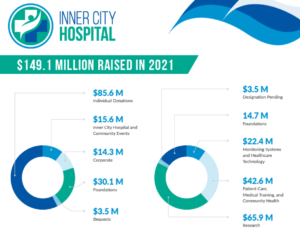 The report should include your brand colors, logo, and a header displaying your nonprofit’s name. This type of design will require more experience with content layout than visual creation and illustration, so be sure you partner with a designer who can optimize your organization’s content.
The report should include your brand colors, logo, and a header displaying your nonprofit’s name. This type of design will require more experience with content layout than visual creation and illustration, so be sure you partner with a designer who can optimize your organization’s content.
Tools and skills needed for nonprofit print design:
- Adobe Indesign
- Marketing
- Adobe Photoshop
5) Environmental Nonprofit Graphic Design
Environmental design will help you create a unique and inviting space at your organization’s office or events. It combines graphic design with interior design to create a coherent, immersive, and branded space.
Logos should be present throughout the office and event, for example on banners, murals, stadium ads, or conference spaces. This type of design should be subtle and focus on tasteful imagery that blends into the environment to create subconscious advertisements.
Donor walls can be used as an incentive for events or overall sponsorship. These are great at showing how your organization values your sponsors and large donors.
Banners
Banners are a great way to advertise your organization at your events, sponsor events, or your office. They are easily transferable from location to location, so it’s a great tool for tabling at festivals. You can reuse banners in your organization’s office to increase morale and demonstrate your nonprofit’s enthusiasm if any supporters or sponsors visit the office.
Lightweight banners are best, and they should be able to be put up or taken down without damaging any walls. Always include your logo and maybe a tagline or mission statement if short enough. Include imagery that is memorable and easily identified.
Some banners should be evergreen, but sometimes it is worth it to customize your banners for individual campaigns or events. If you cohost an event with one or more sponsors, show how you treasure their relationship by including their name or logo on the event banner.
Here are some examples of the types of banners you may use:
- Feather banner
- Retractable
- Pole banner
- Suspended banner
Murals
You could have a mural painted in honor of a major donor or your constituents. If your organization focuses on a specific geographic area like a town or county, you can commission a mural with your organization’s logo embedded into it.
The purpose of the mural can be twofold: beautifying the area it’s in and raising awareness for your organization’s cause. Embed your logo or shortened contact information like a social media username or URL to help passersby connect the mural with your nonprofit if it’s located in a public space.
Donor Walls
Donor walls are the ultimate tribute to your nonprofit’s sponsors and partners. Equally a beautiful art piece and a thoughtful tribute, a donor wall will show your appreciation to your sponsors, partners, and prospective donors alike.
Designers can base the installation off something related to your cause. It can be a yearly project or can be altered every so often to reflect changes to your donor program.
The Great Plains ASPCA used their logo as the center piece for their yearly donor wall of dog tags. Each dog tag includes a donor’s name and represents a gift of $250 or more.
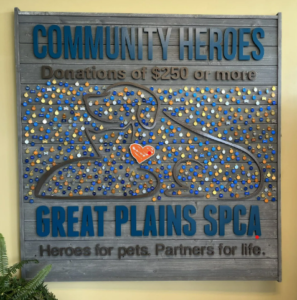
Consider creating a wall that recognizes donors in a way that also honors your cause, such as the SPCA displaying dog tags. Donor walls can help people visualize their impact on your organization and feel inspired to take more action. It can also beautify your office and create an air of elegance and positivity.
Tools and skills needed for nonprofit environmental design:
- Adobe Creative Suite
- Advertising
- Large Scale Design
Best Resources for Various Nonprofit Graphic Design Types
Whether you decide to use all five types of graphic design or choose just one to get started with, there is a plethora of resources for all your design needs. Most come with a mix-and-match variety of services, and others come with a specialized plan. Be sure to try different types of design, and don’t be afraid to ask your nonprofit’s graphic designer to work with you to create the branding of your dreams!
- Need it all? Kwala’s monthly subscription services grant access to a host of unlimited resources, a dedicated nonprofit graphic designer, and unlimited designs that you will own.
- Looking to grow? Kanopi makes nonprofit website design easy. Their team of website designers will work with you to plan multiple iterations of your site to maximize growth potential.
- Need fashionable merchandise? Bonfire will cater to your brand and personal tastes to make merchandise that will have your supporters asking for more.
- Going old school? Meyer Partners will consult with your nonprofit to create campaign materials and all your nonprofit graphic design needs.
- Looking for more? Double the Donation’s list of nonprofit website design agencies makes it easy to find any variation of web services you may need.

